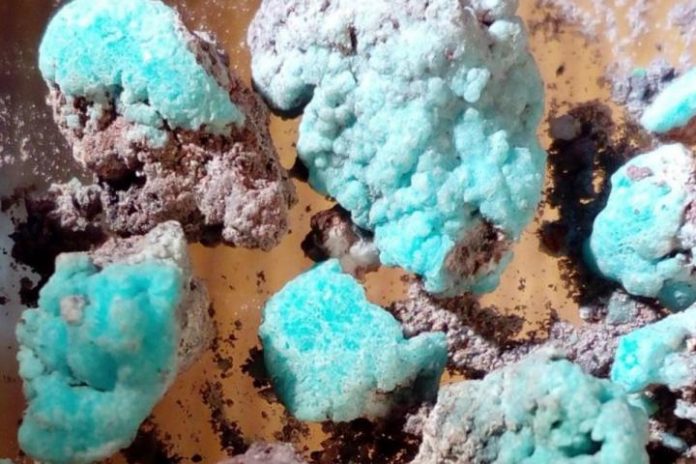Petrovite is the name of the new mineral discovered by scientists at St Petersburg University, a bright blue crystal which could someday provide energy
The use of minerals to create renewable energy is one that would need a lot of further exploration. But what if naturally occurring substances could power the batteries of the world?
This new discovery is one such mineral. The recent find by the scientists from St Petersburg University, petrovite, aka Na10CaCu2(SO4)8, looks like blue globular aggregates of tabular crystals with gaseous inclusions. Professor Stanislav Filatov has been pursuing the existence of new minerals for 40 years, during which time they have focused on the mineralogy of post-eruption volcanoes.
What is the mineral petrovite made of?
The mineral consists of oxygen atoms, sodium sulphur and copper, which form a porous framework. The voids are connected to each other by channels through which relatively small sodium atoms can move. The chemical composition of the mineral was determined by Svetlana Moskaleva, a research associate at the Institute of Volcanology and Seismology of the Far Eastern Branch of the Russian Academy of Sciences.
The scientists have therefore established that the structure of petrovite is promising for ionic conductivity and can be used as a cathode material for sodium ion batteries. The sodium ion battery is a promising alternative technology for energy storage systems because of the abundance and low cost of sodium in the Earth’s crust.
Professor Stanislav Filatov, the project manager, commented: “The copper atom in the crystal structure of petrovite has an unusual and very rare coordination of seven oxygen atoms.
“Such coordination is characteristic of only a couple of compounds, as well as of saranchinaite, which was discovered by our colleagues from St Petersburg University – the research team of Professor Oleg Siidra.”
Where is the mineral found?
Petrovite was found inside a the Tolbachik Volcano, after two crucial eruptions in which they were formed after two major eruptions in 1975-1976 and 2012-2013.
Researcher Stanislav Filatov further commented: “At present, the biggest problem for this use is the small amount of a transition metal – copper – in the crystal structure of the mineral.
“It might be solved by synthesising a compound with the same structure as petrovite in the laboratory.”
Despite the fact that most of the recent discoveries of mineralogists and crystallographers of St Petersburg University are associated with the Kamchatka Peninsula, scientists discover many new minerals in the most unusual places. Among the finds in 2008-2017 there are samples from polar Yakutia, the Kola Peninsula, Israel, Greece, Tanzania, South Africa, Jordan and many other locations.











